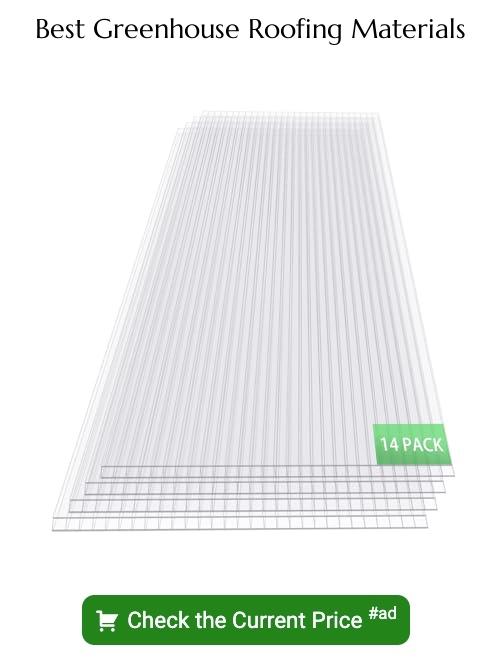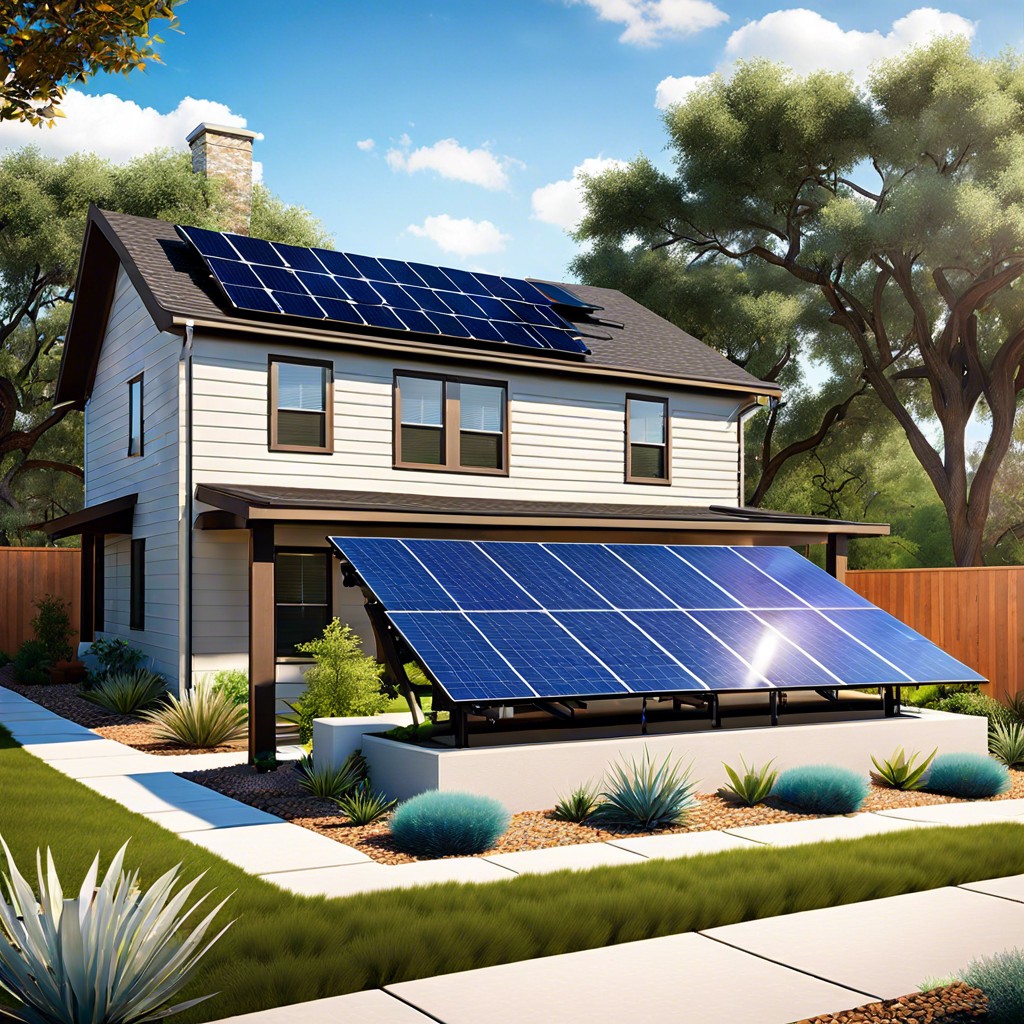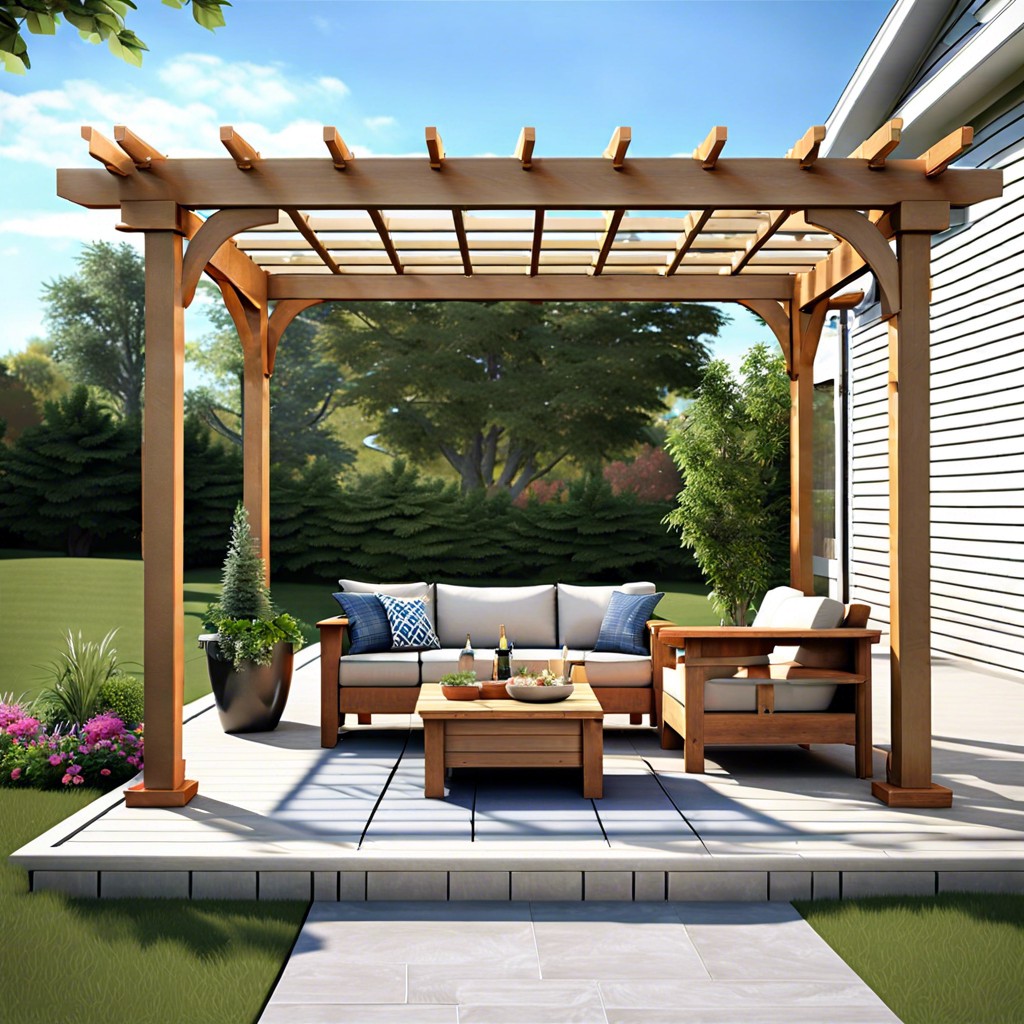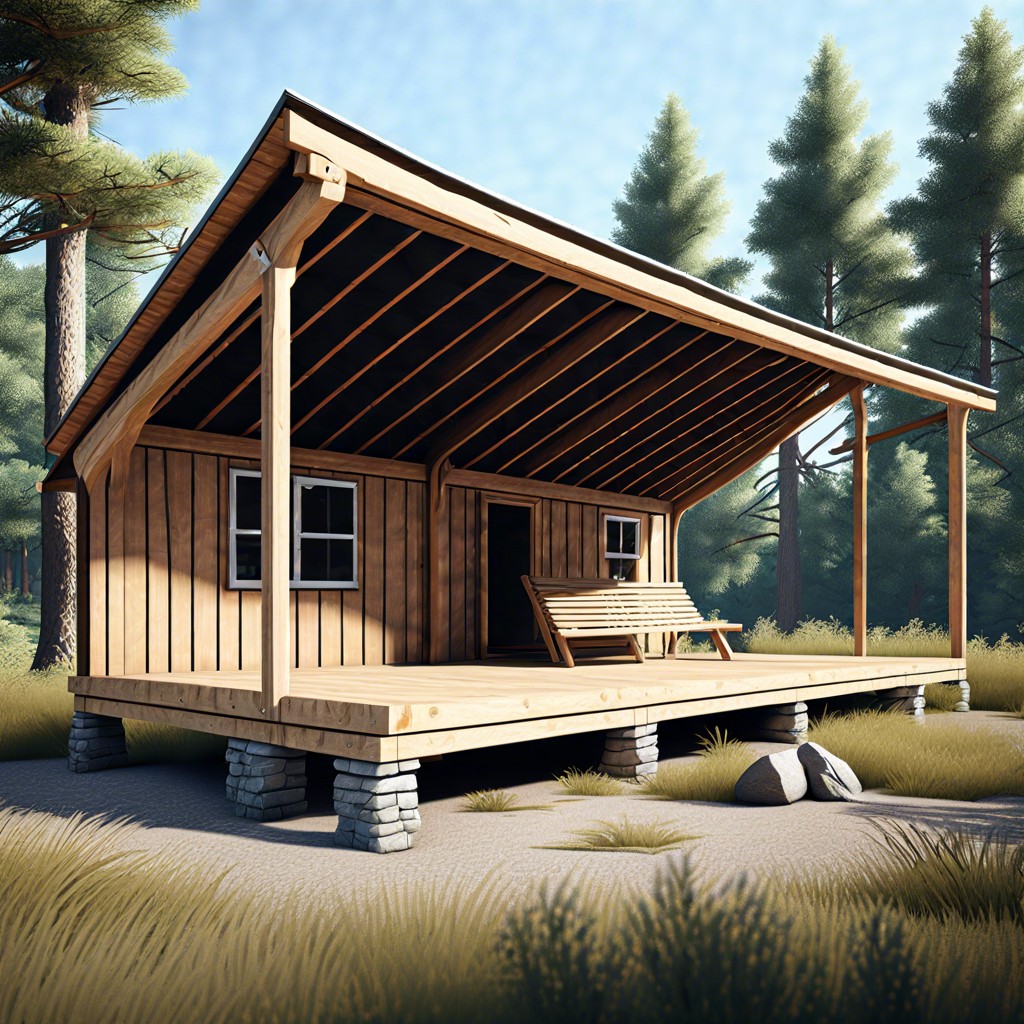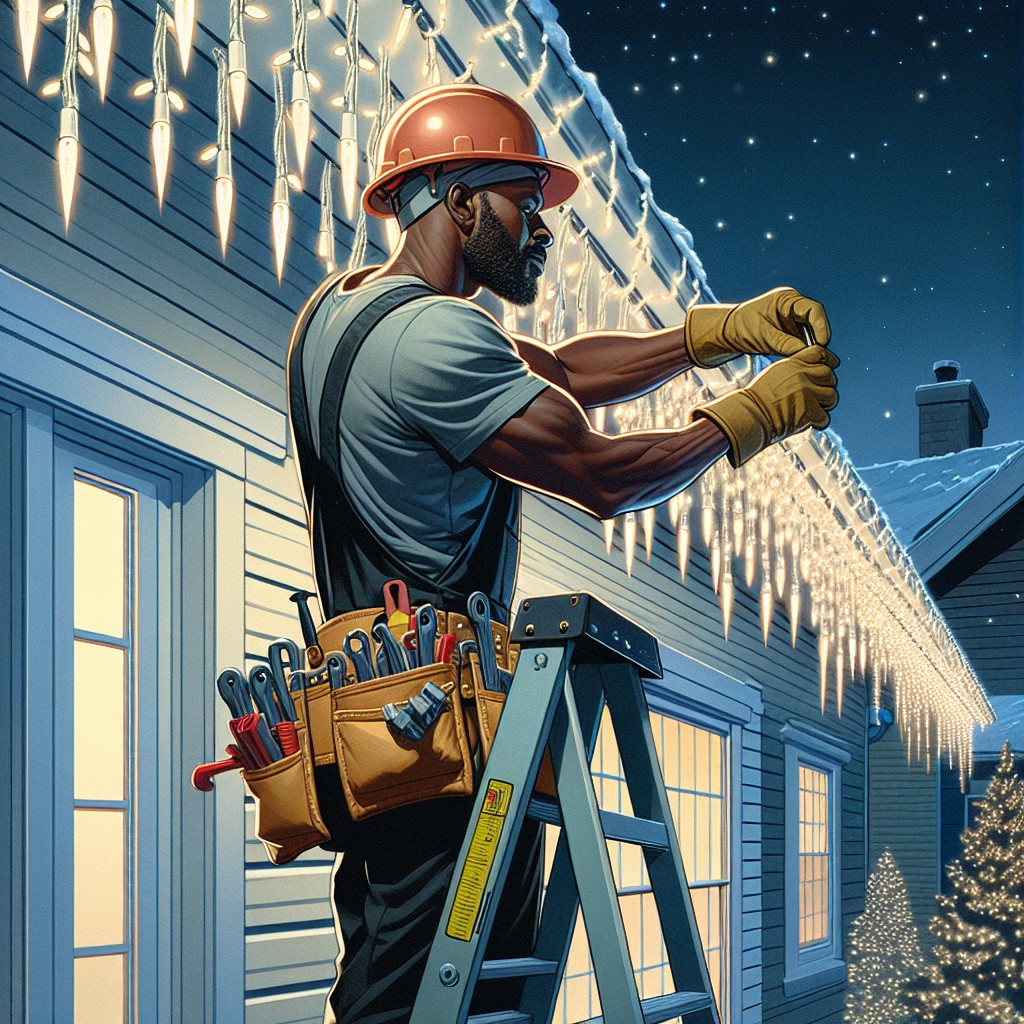Last updated on
Explore various greenhouse roof designs to optimize the growth of your plants by harnessing sunlight, improving ventilation, and ensuring efficient energy use.
Greenhouse roof designs are fundamental to the efficiency and productivity of your plants. The right design can significantly influence the amount of light, temperature control, and ventilation your plants receive.
This article delves into an array of greenhouse roof designs, ranging from flat roofs to A-frame, dome, and even barn-style roofs. Each design has its unique advantages and considerations, such as cost, durability, and ease of installation.
By understanding these different options, you’ll be better equipped to choose a roof design that optimizes your greenhouse environment for plant growth. Stick around to explore the intricate details of each design and how to select the best one for your specific needs.
Translucent Polycarbonate Roofing
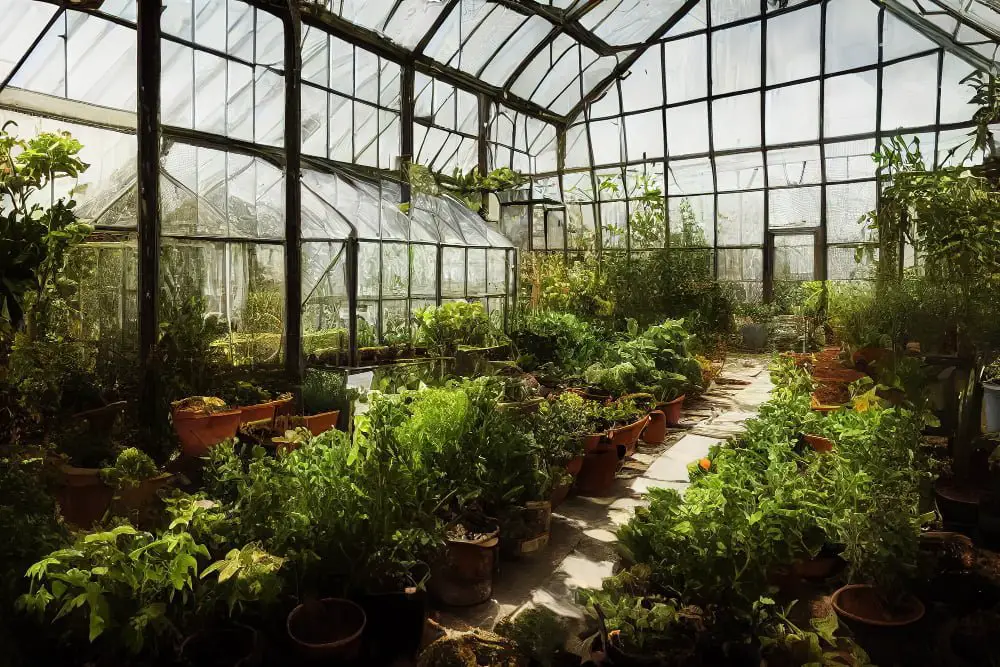
Translucent polycarbonate roofing is a popular choice for greenhouse designs. This type of roofing material allows ample sunlight to enter the structure while providing protection from UV rays and extreme weather conditions.
Polycarbonate panels are lightweight, durable, and easy to install, making them an excellent option for both DIY greenhouse builders and professionals. With their thermal insulation properties, these translucent roofs help to maintain a stable temperature inside the greenhouse, promoting optimal growing conditions for plants.
Additionally, polycarbonate roofing offers high impact resistance and can withstand hail, snow, and heavy wind loads. Its design flexibility allows for different panel shapes and sizes, offering a versatile range of possibilities for greenhouse design aesthetics.
Gable Style Glazed Roof
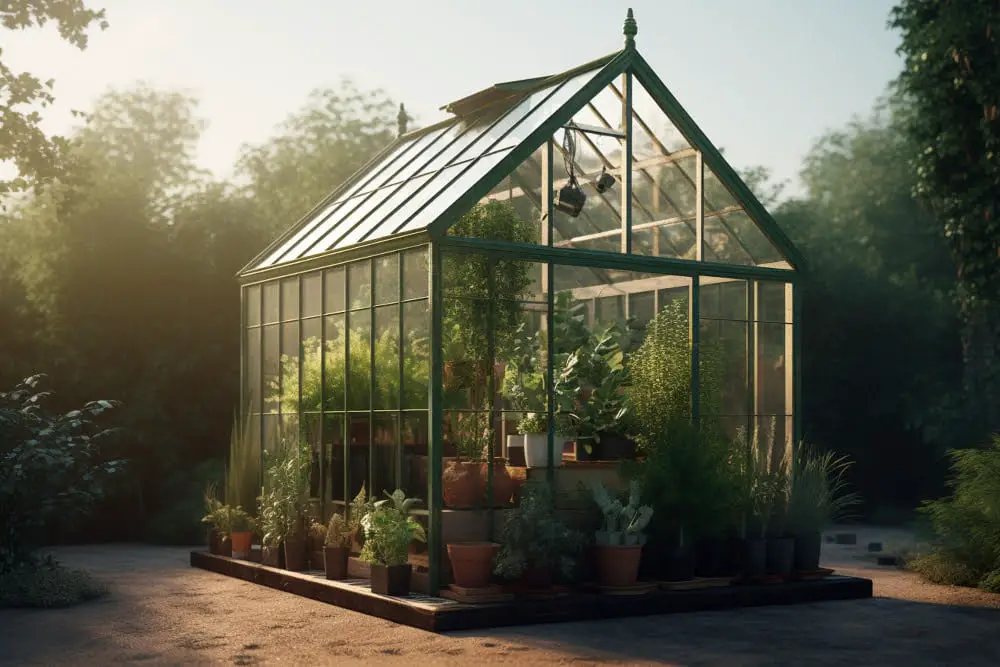
A gable style glazed roof is a popular choice for greenhouse designs due to its functional and aesthetically pleasing features. This type of roof consists of two sloping sides that meet at a ridge in the middle, creating a triangular gable shape. The glazed panels used for this style of roofing are typically made of glass or polycarbonate, allowing ample natural light to enter the greenhouse.
The steep angle of the gable roof helps to maximize sunlight exposure throughout the day, promoting optimal growth for plants inside. The design also provides excellent rainwater drainage, as water runs off easily from the sloped surfaces.
Moreover, the gable style glazed roof offers versatility in terms of ventilation options. Vents can be installed along the sides or the ridge of the roof, enabling effective airflow and temperature regulation within the greenhouse. This is particularly beneficial for maintaining the ideal environment for different types of plants, as proper ventilation helps prevent issues like excessive humidity and temperature fluctuations.
Overall, the gable style glazed roof is a practical and visually appealing choice for a greenhouse, as it combines efficient lighting, efficient drainage, and excellent ventilation capabilities. With its sleek and classic design, it can enhance the overall aesthetics of any garden or backyard space while providing an optimal environment for plant growth.
Solar Panel Integrated Roofing
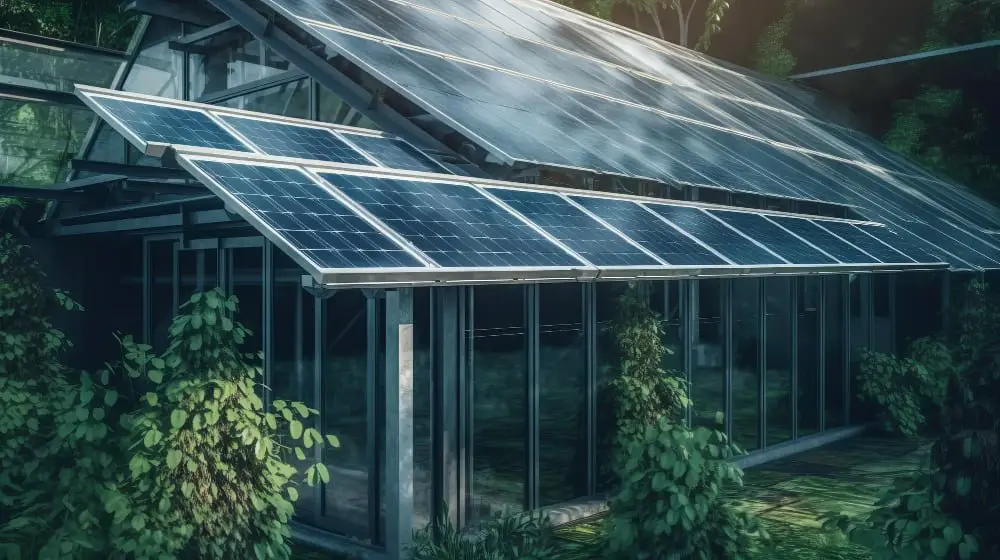
Solar panel integrated roofing is an innovative and eco-friendly approach to greenhouse roof design. By incorporating solar panels directly into the roof structure, greenhouse owners can harness the power of the sun to provide electricity for their operations.
This integration not only helps to reduce energy costs but also minimizes the environmental impact of the greenhouse. It allows for a seamless aesthetic while maximizing the use of available space.
Solar panel integrated roofing is a smart solution for greenhouse owners looking to optimize sustainability and efficiency in their operations.
Traditional Glass Paneled Roof
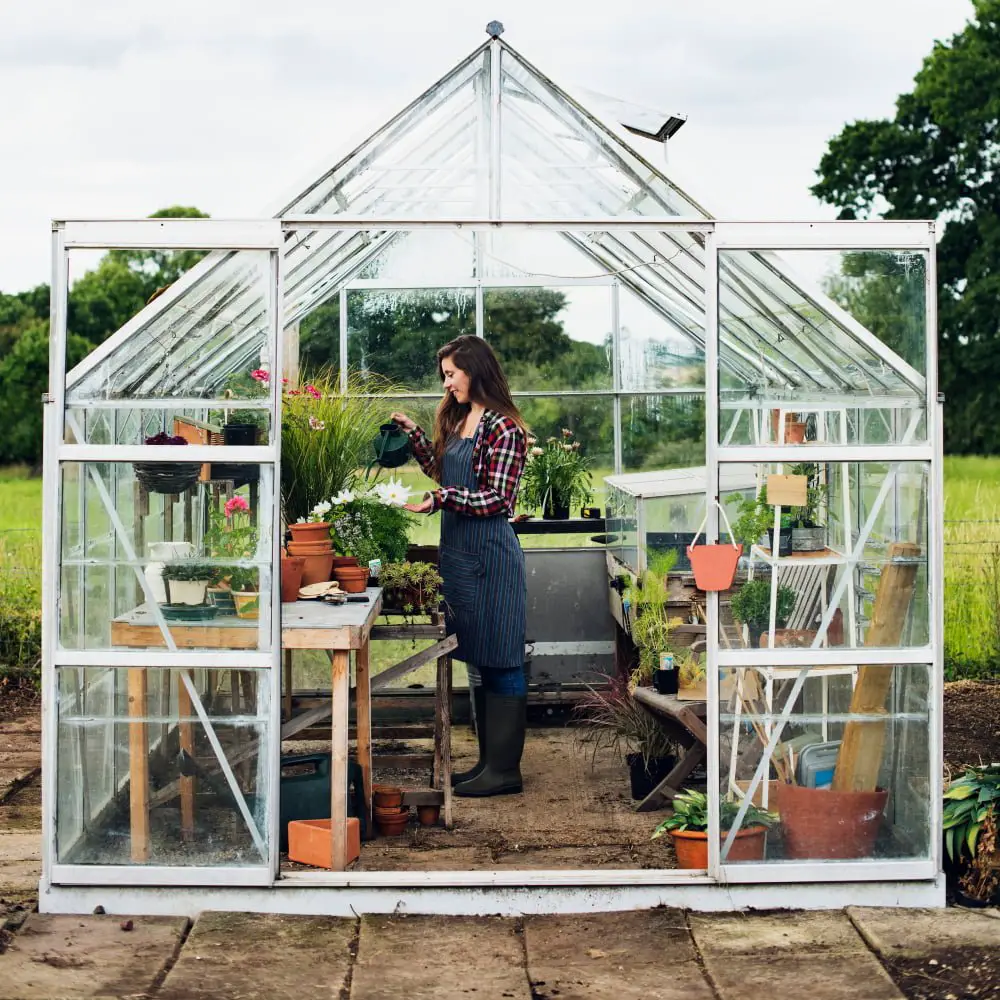
A traditional glass paneled roof is a classic choice for greenhouse design. Its timeless appeal and functionality make it a popular option among gardeners and enthusiasts.
The transparent glass panels allow ample sunlight to enter the greenhouse, creating an ideal environment for plant growth. The clear panels also provide unobstructed views of the plants and the surrounding landscape.
When properly installed and maintained, a traditional glass paneled roof can offer excellent insulation, ensuring a consistent temperature and protecting plants from harsh weather conditions.
Additionally, the glass panels are durable and long-lasting, making them a reliable roofing option for any greenhouse.
Recycled Bottle Green Roof
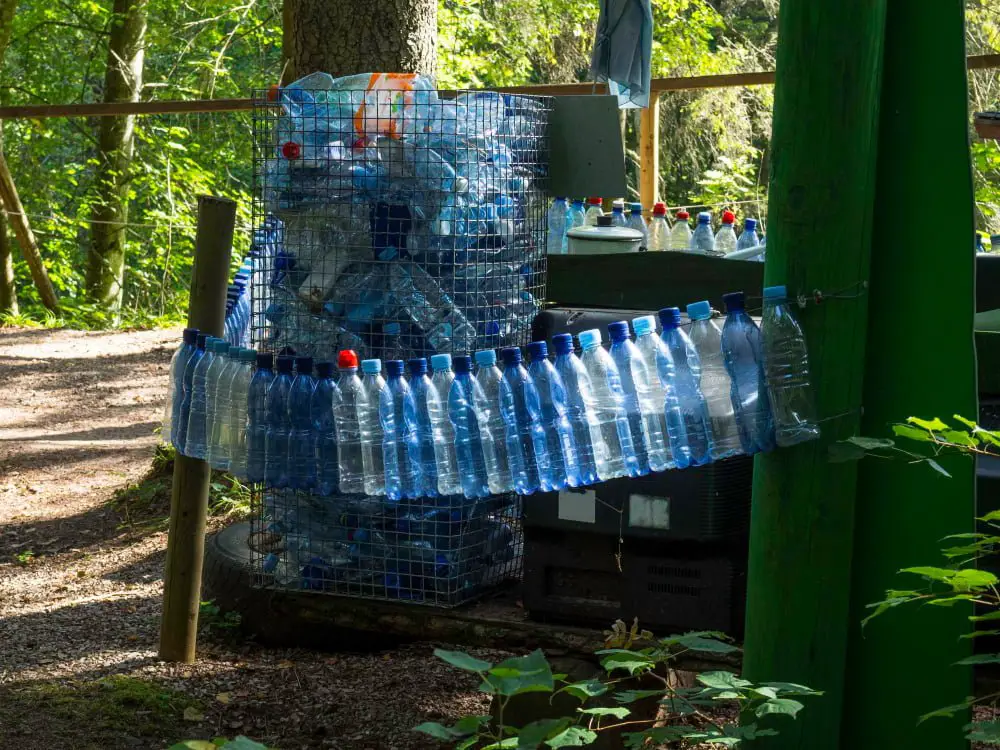
Recycled Bottle Green Roof: One creative and eco-friendly option for greenhouse roofing is the use of recycled bottles. Instead of traditional roofing materials, such as glass or polycarbonate, this unique approach repurposes plastic bottles to create a sustainable and aesthetically pleasing green roof.
Empty bottles are carefully arranged and secured, forming a solid surface that provides insulation and natural light diffusion. Not only does this design reduce waste and promote recycling, but it also adds a touch of creativity and uniqueness to the greenhouse structure.
The bottles can be clear or colored, allowing for different aesthetic possibilities. Additionally, the inherent lightweight nature of the bottles makes this green roof option suitable for a variety of greenhouse designs.
Overall, the recycled bottle green roof is an innovative way to reduce environmental impact and incorporate sustainability into greenhouse roof design.
Green Living Roof With Plants
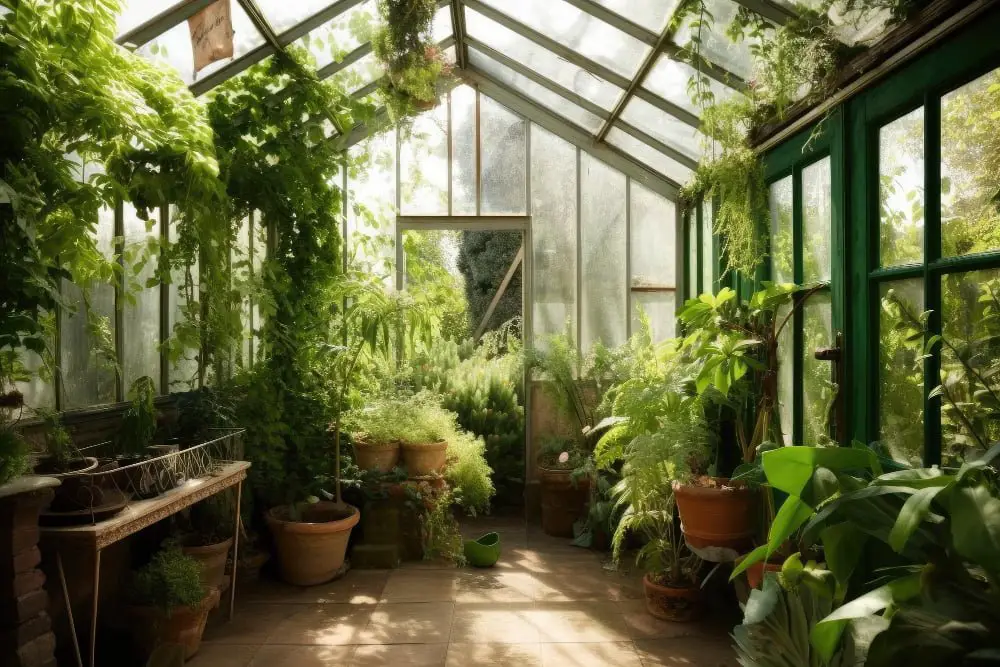
A green living roof with plants is a unique and eco-friendly option for greenhouse roofing design. By incorporating a layer of vegetation on the roof, it not only enhances the aesthetics of the structure but also offers numerous benefits.
The plants act as natural insulators, providing additional thermal control and reducing energy consumption. They also absorb carbon dioxide, thus helping to mitigate greenhouse gas emissions.
Furthermore, green roofs aid in rainwater management by absorbing and filtering it, reducing runoff and water pollution.
Adding a green living roof to your greenhouse not only promotes sustainability but also creates a soothing and natural environment for your plants to thrive.
Dome-shaped Roof Design
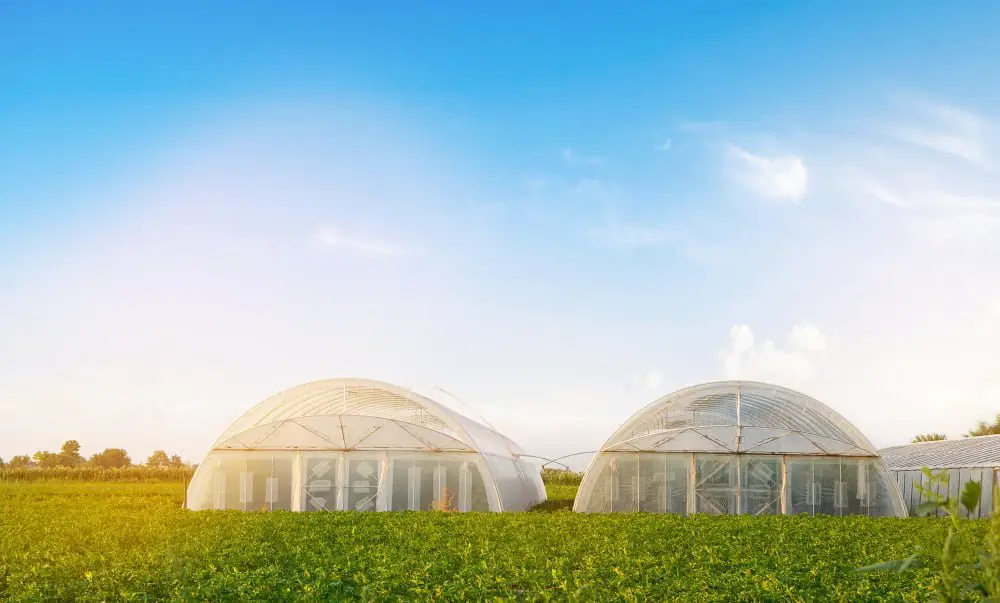
A dome-shaped roof design is an excellent choice for a greenhouse due to its unique benefits. The curved and rounded structure enables an even distribution of sunlight, maximizing the amount of natural light that reaches the plants.
This design also provides excellent strength and stability, making it highly resistant to wind and adverse weather conditions. Additionally, the dome shape allows for efficient rainwater collection, which can be used for irrigation purposes.
With its aesthetic appeal and functional advantages, a dome-shaped roof design offers an attractive and practical option for any greenhouse.
Lightweight Fiberglass Roofing
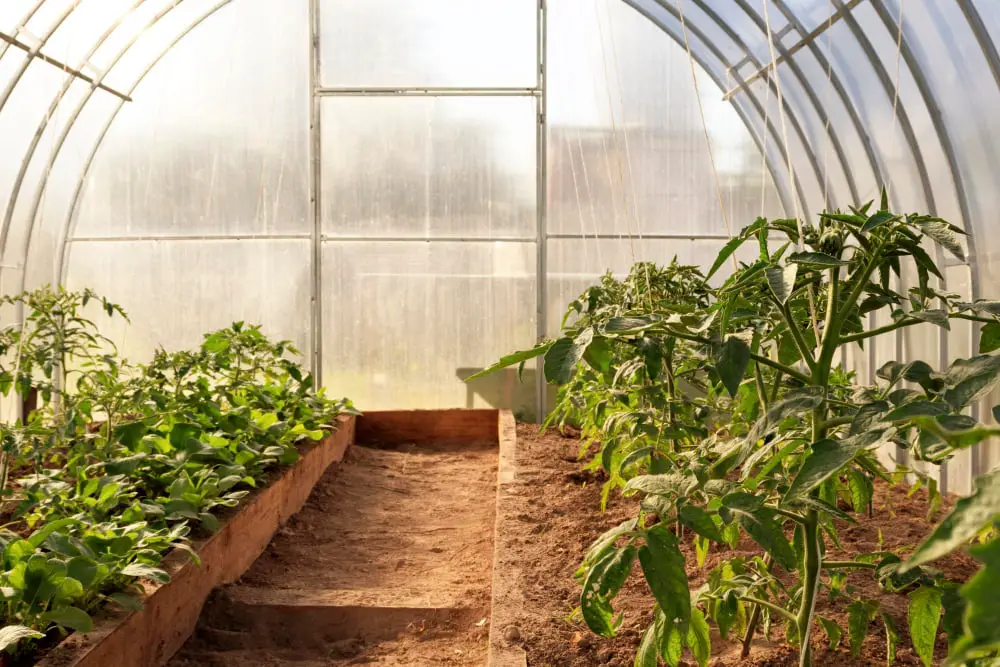
Lightweight fiberglass roofing is an excellent choice for greenhouse roof design due to its numerous advantages. Fiberglass is a durable material that is known for its strength, yet it is surprisingly lightweight. This makes it easy to handle and install, reducing the need for heavy support structures.
Additionally, fiberglass is highly resistant to damage from UV rays, extreme temperatures, and moisture, making it ideal for withstanding the harsh conditions often found in greenhouse environments. Its translucent nature allows for ample natural light transmission, promoting healthy plant growth. Moreover, fiberglass is a cost-effective option, as it requires minimal maintenance and has a long lifespan.
With its combination of strength, lightness, and durability, fiberglass roofing is a reliable and practical choice for greenhouse owners looking for a roofing material that will stand the test of time.
Curved Eave Roof Design
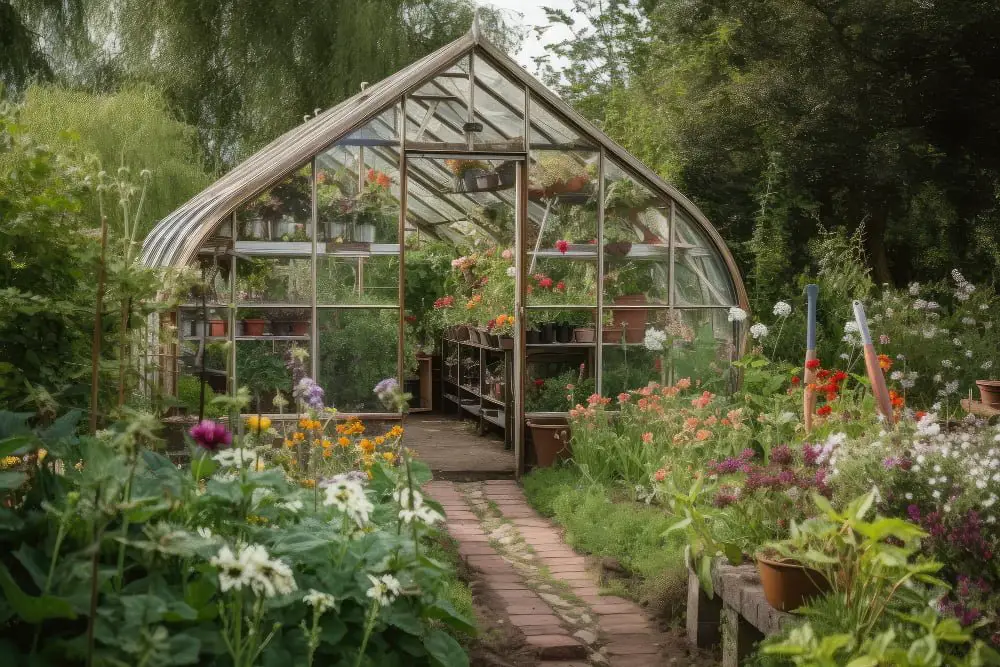
Curved eave roof design offers a unique and aesthetically pleasing option for greenhouse roofing. By opting for a curved eave roof, you can create a visually striking structure that stands out among traditional designs. The gently arched roofline adds a touch of elegance to your greenhouse, making it a focal point in your garden or backyard.
Apart from its appealing appearance, a curved eave roof design also offers practical benefits. The curved shape maximizes the sunlight exposure throughout the day, ensuring optimal light distribution for your plants. This design facilitates better ventilation as well, allowing hot air to rise and escape through the top, while drawing in fresh air from the lower openings.
Additionally, the curved eave roof design helps with water runoff during rainy periods. The shape promotes water drainage, preventing any pooling or accumulation on the roof surface. This is especially advantageous in areas that experience heavy rainfall, as it reduces the risk of leaks or damage to the greenhouse structure.
When considering a curved eave roof design for your greenhouse, it’s important to consult with professionals experienced in greenhouse construction. They can guide you on the appropriate curvature and materials for your specific needs, ensuring a well-constructed and functional structure.
Overall, a curved eave roof design offers both aesthetic appeal and practical advantages for your greenhouse. Its elegant curve, effective ventilation, and water drainage capabilities make it a popular choice among garden enthusiasts seeking a unique and efficient roofing solution.
Louvered Vent Roof
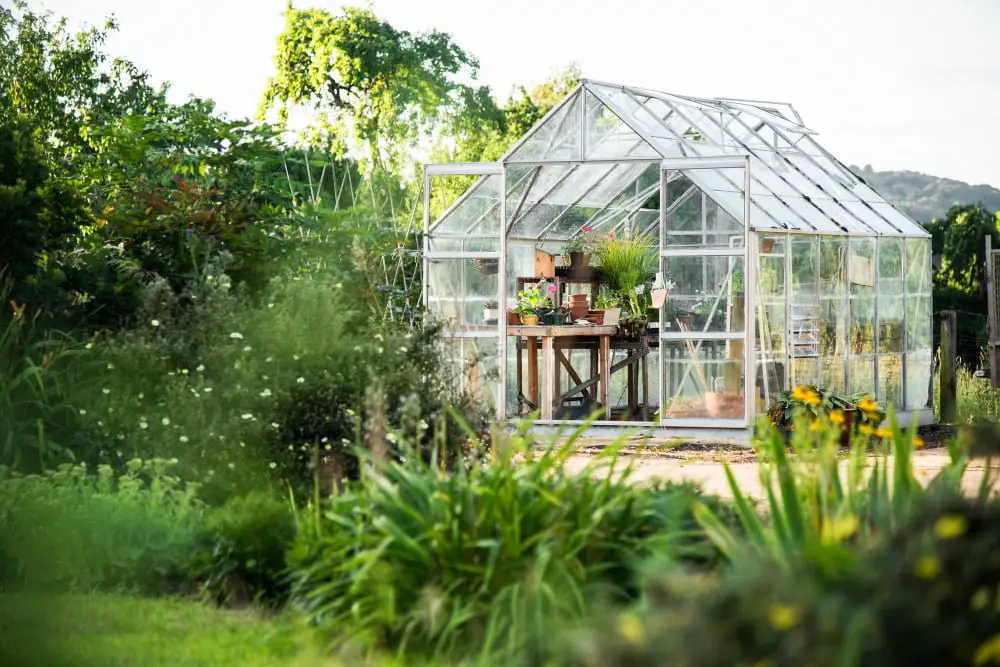
A louvered vent roof is an innovative design that incorporates ventilation features into the greenhouse roof. This type of roofing allows for controlled airflow and temperature regulation within the greenhouse.
The roof is equipped with adjustable louvers that can be opened or closed to control the amount of air and sunlight entering the structure. By adjusting the louvers, greenhouse owners can optimize ventilation, preventing excessive heat buildup, and maintaining optimal growing conditions for plants.
The louvered vent roof is particularly beneficial in regions with hot climates or during the summer months when temperature control is crucial for plant health and productivity. With its practical design and functionality, the louvered vent roof offers an effective solution for greenhouse owners who prioritize proper airflow and temperature regulation.
Gothic Arch Roof Style
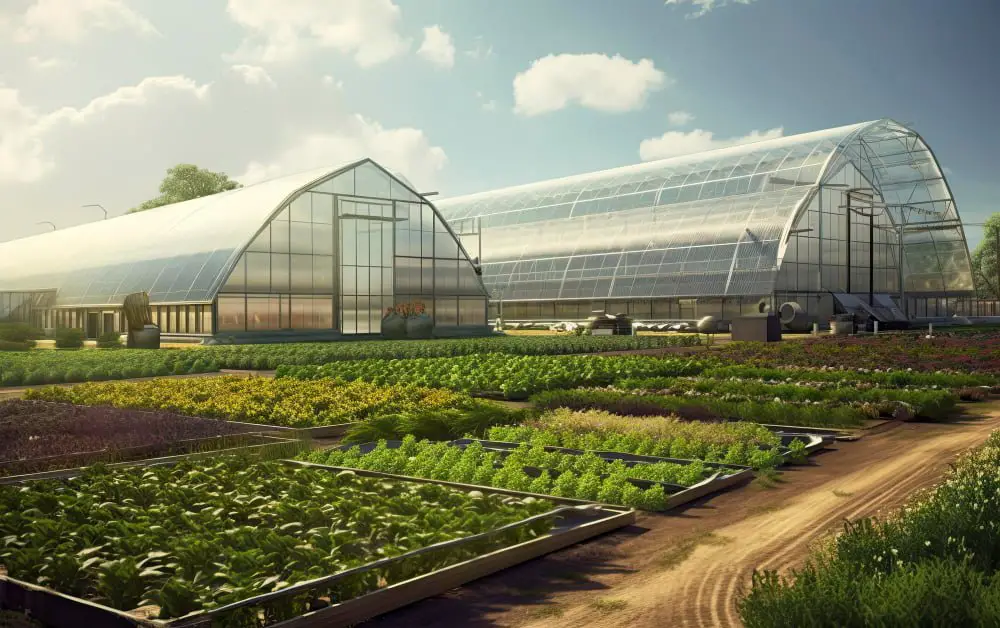
The Gothic arch roof style is a visually striking option for greenhouse designs. Inspired by medieval architecture, this unique roof shape features a pointed arch at the top, creating an elegant and dramatic look.
The steep pitch of the arch allows for efficient rainwater drainage, preventing water accumulation on the roof. Additionally, the high point of the arch provides ample headroom, allowing for vertical growth of taller plants.
The Gothic arch roof style not only adds aesthetic appeal to your greenhouse but also promotes functionality and efficient use of space.
Pyramid-shaped Glass Roof
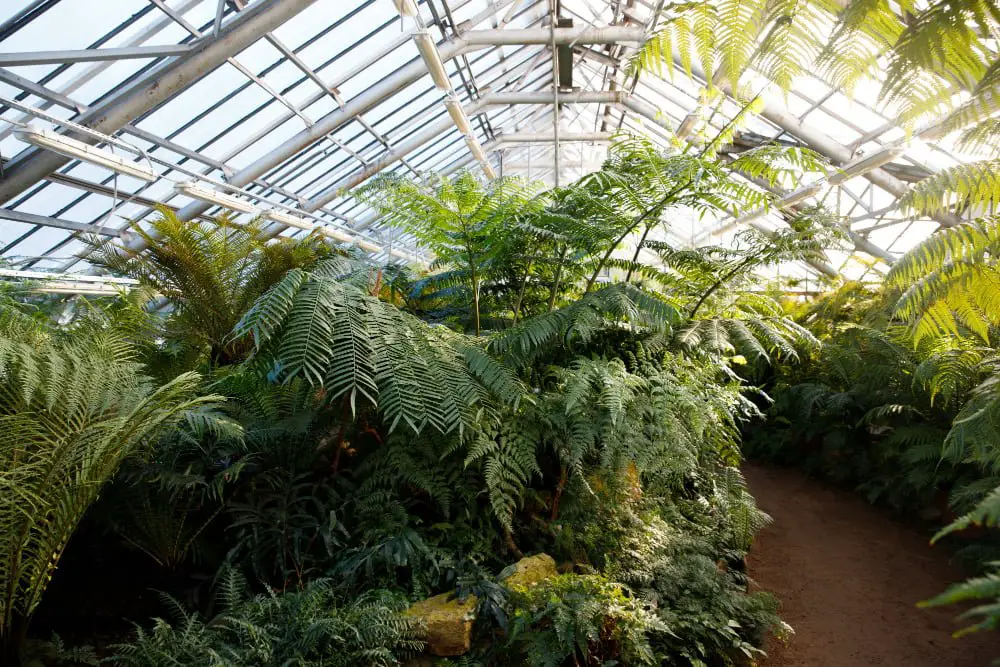
A pyramid-shaped glass roof is a unique and eye-catching design option for a greenhouse. This style of roof not only adds an elegant touch to the structure but also maximizes natural light intake from all sides.
The pyramid shape allows for excellent drainage and prevents the accumulation of snow or debris. With its sleek and modern appearance, a pyramid-shaped glass roof can create a stunning focal point in any greenhouse design, while also providing a well-lit and spacious environment for your plants to thrive.
Butterfly Roof for Water Collection
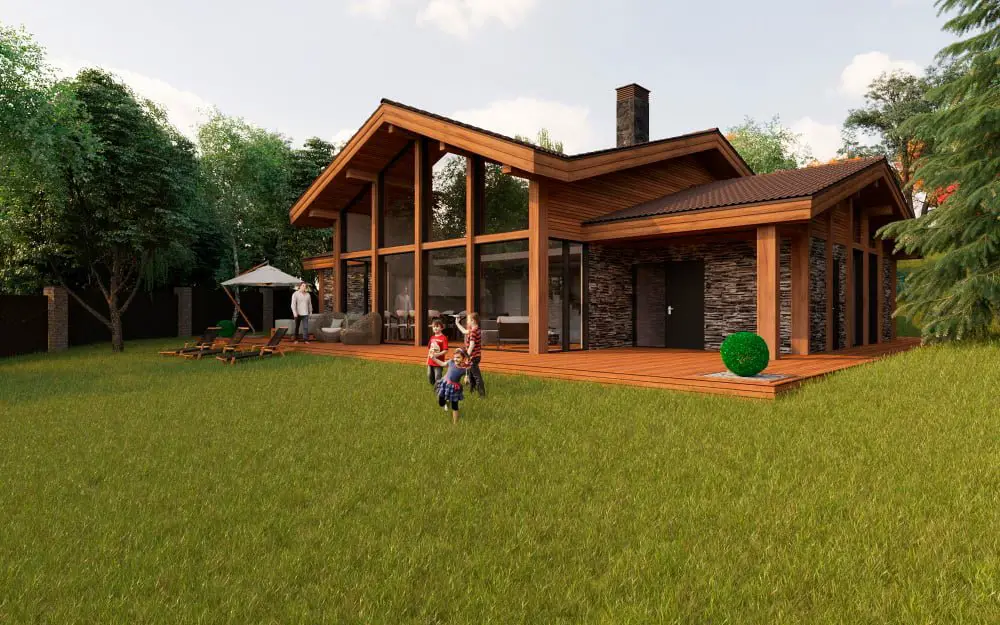
A butterfly roof is an innovative design that not only adds a unique aesthetic appeal to a greenhouse but also serves as an effective water collection system.
This type of roof is characterized by its V-shaped design, which slopes downward towards the center, creating a butterfly wing-like appearance.
The design allows rainwater to naturally flow towards the center, where it can be collected and stored for later use.
The shape of the roof also facilitates efficient runoff and reduces the risk of water pooling and potential damage to the structure.
Additionally, the increased surface area of the butterfly roof maximizes rainwater collection, making it an eco-friendly choice for greenhouse owners looking to conserve water resources.
Combi Designs With Part Glass/part Solid Roofing
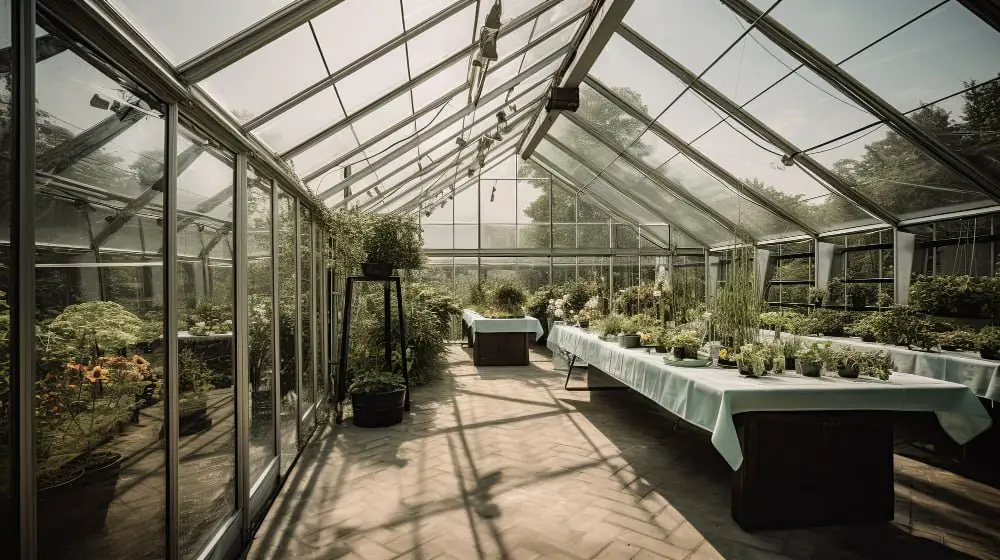
Combi designs with part glass/part solid roofing offer a perfect balance between natural lighting and insulation. These innovative greenhouse roof designs combine the transparency of glass with the durability and insulation properties of solid materials.
The solid roofing sections provide better thermal insulation, reducing heat loss during colder seasons. Meanwhile, the glass sections allow ample sunlight to enter, promoting optimal plant growth.
The strategic placement of glass and solid panels allows growers to control the amount of sunlight and heat that enters the greenhouse, ensuring ideal growing conditions for a wide range of plants.
Combi designs with part glass/part solid roofing offer a practical solution for greenhouse owners who want to optimize energy efficiency and create a comfortable environment for their plants.
Eco-friendly Bamboo Roofing
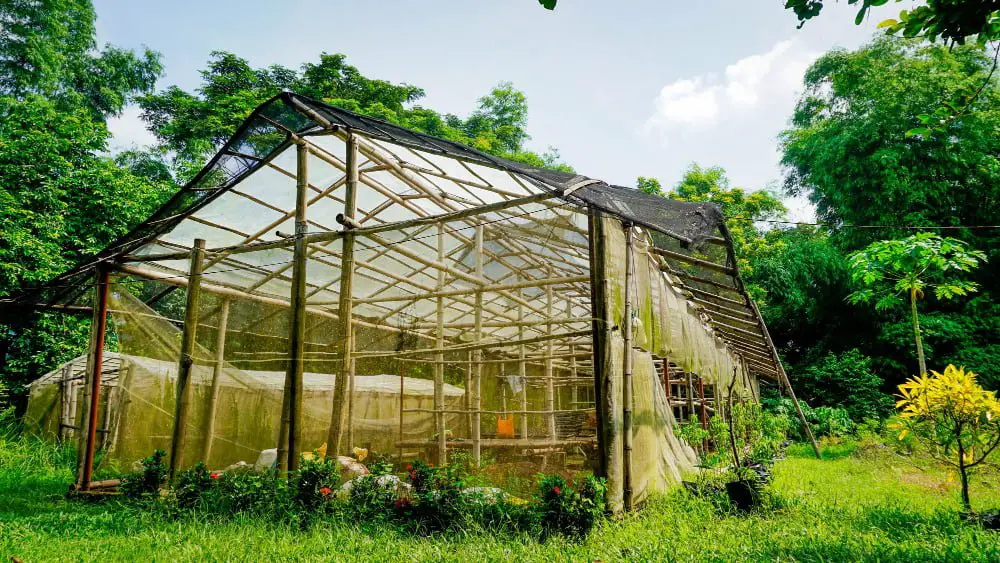
Eco-friendly bamboo roofing offers a sustainable and renewable option for greenhouse roof design. Bamboo is a fast-growing plant that can be harvested every few years, making it an environmentally friendly choice.
Its natural durability and resistance to rot make it a suitable material, capable of withstanding various weather conditions. Bamboo roofing can provide excellent insulation and natural ventilation, ensuring a stable climate for plants in the greenhouse.
Additionally, the unique visual appeal of bamboo adds a touch of natural beauty to the overall aesthetic of the greenhouse. Its lightweight nature also makes it easier to install and maintain.
Overall, eco-friendly bamboo roofing is a practical and eco-conscious choice for those seeking a sustainable approach to greenhouse roof design.
Insulated Retractable Fabric Roofing
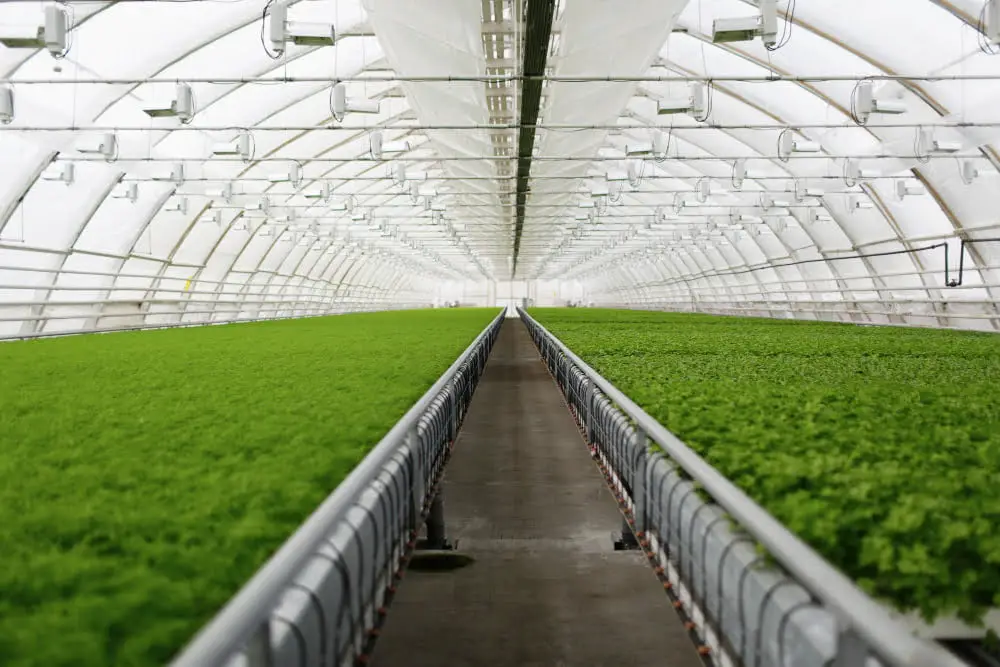
Insulated retractable fabric roofing provides a versatile solution for greenhouse owners. This type of roofing offers a unique combination of insulation and flexibility.
The insulation helps regulate temperature inside the greenhouse by retaining heat during colder months and reducing excessive heat during warmer months. The retractable feature allows for easy adjustment of the roof, enabling the control of sunlight penetration and ventilation.
With the ability to retract the fabric, greenhouse owners can create the ideal growing environment for their plants, ensuring optimal conditions for growth and productivity. Additionally, the lightweight nature of the fabric makes it easy to operate the retractable roof, requiring less effort and maintenance compared to other roofing options.
Overall, the insulated retractable fabric roofing offers a smart and efficient solution for greenhouse owners who seek control over their indoor climate.
Terracotta Tiled Roof Greenhouse
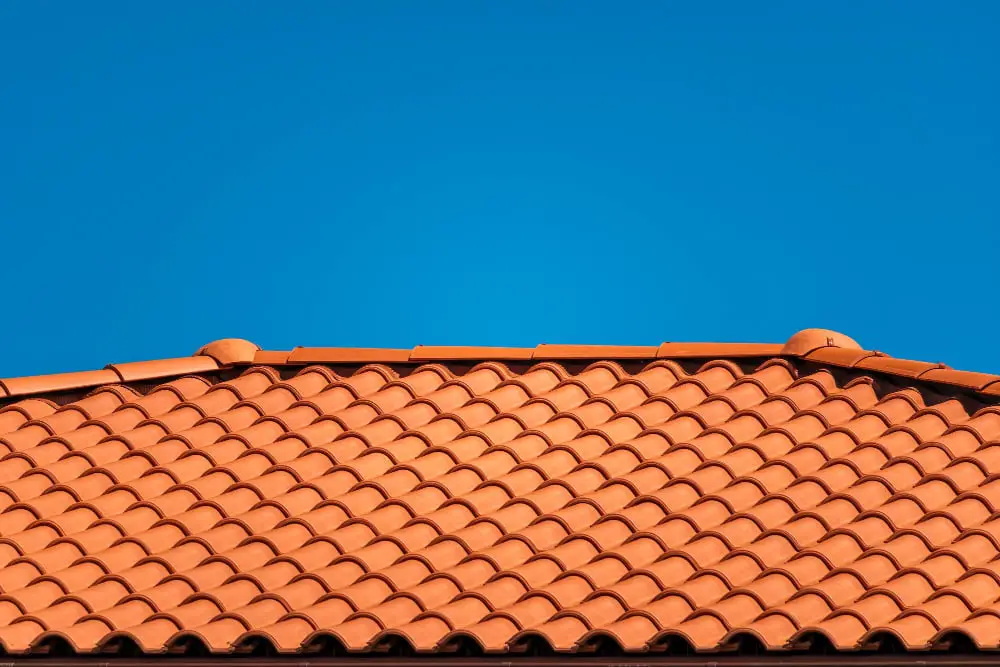
Terracotta tiled roofs on greenhouses offer a unique and aesthetically pleasing design option. These roofs not only provide durability but also add a touch of elegance to the structure.
The terracotta tiles, with their warm and earthy tones, blend seamlessly with natural surroundings, creating a harmonious environment for plants and garden enthusiasts.
Additionally, terracotta tiles can help regulate the temperature inside the greenhouse by absorbing and radiating heat effectively. This feature makes them suitable for both warm and colder climates.
With proper installation and maintenance, a terracotta tiled roof can enhance the overall appeal of your greenhouse while providing a reliable and functional roofing solution.
Copper Greenhouse Roof
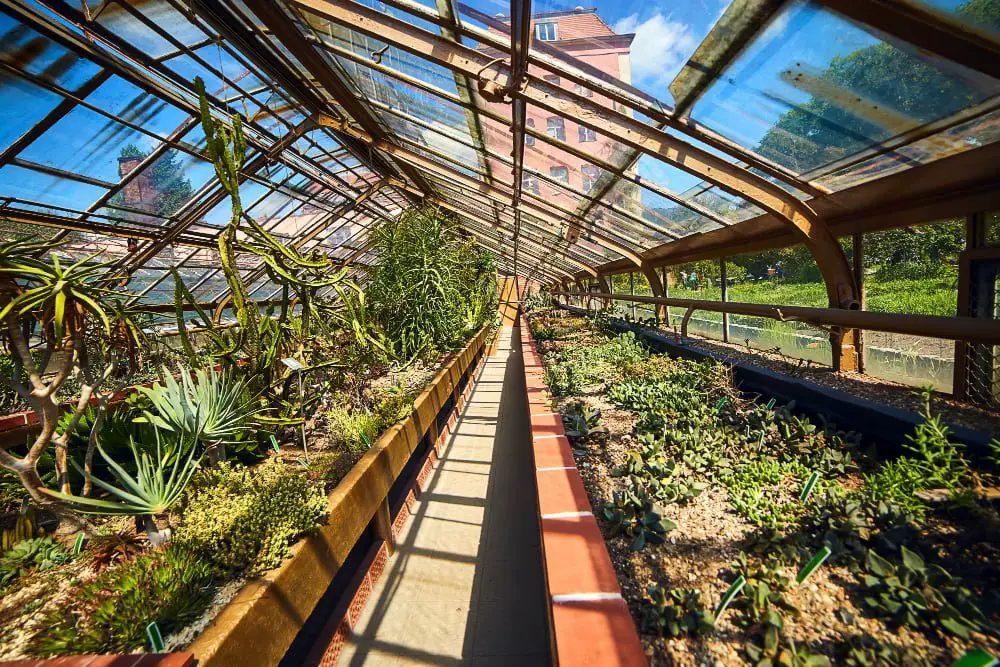
Copper greenhouse roofs offer a unique and elegant option for your greenhouse design. The natural patina that forms over time gives a distinctive look to your structure.
Copper is highly durable, resistant to corrosion, and can withstand extreme weather conditions. Additionally, copper has excellent heat conductivity, which helps regulate the temperature inside the greenhouse. The reflective properties of copper also allow for maximum sunlight absorption, promoting healthy plant growth.
While the initial cost may be higher than other roofing materials, the long lifespan and low maintenance requirements make copper roofs a cost-effective choice in the long run. The timeless beauty and functionality of copper make it a popular option for greenhouse enthusiasts who value aesthetics and functionality in their designs.
Barn Style Pitched Roof
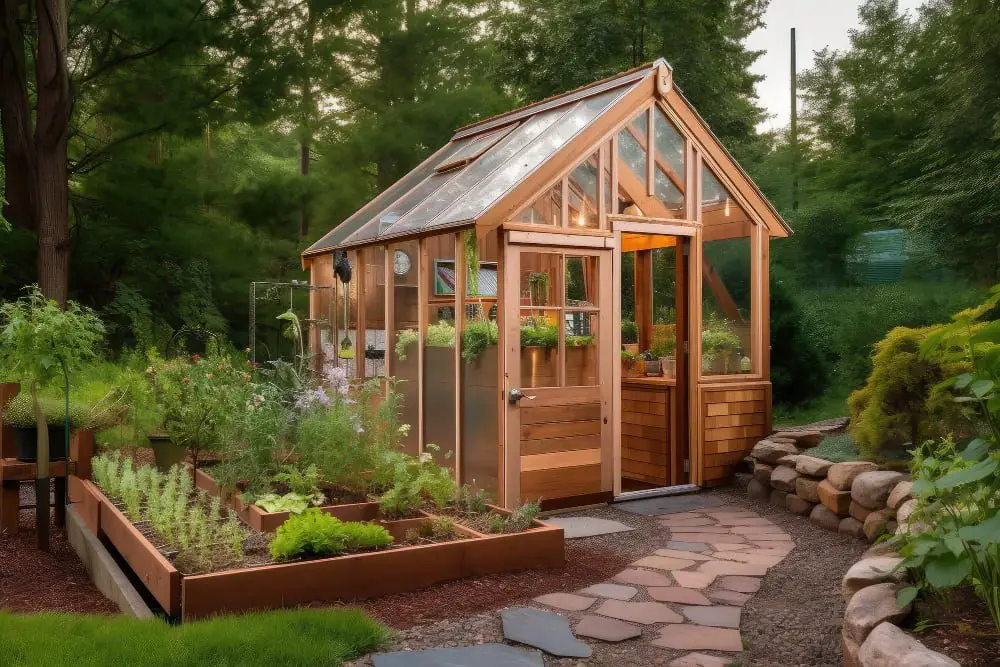
The barn style pitched roof is a classic and popular choice for greenhouse designs. Inspired by traditional agricultural barns, this style features a steeply pitched roof that provides excellent water runoff and increased storage space.
The high slope allows for efficient snow shedding, making it ideal for regions with heavy snowfall. It also provides ample vertical space for tall plants or climbers. With its rustic charm and functional design, the barn style pitched roof adds a touch of country aesthetics to any greenhouse while ensuring durability and practicality.
High Peak Industrial Roof Design
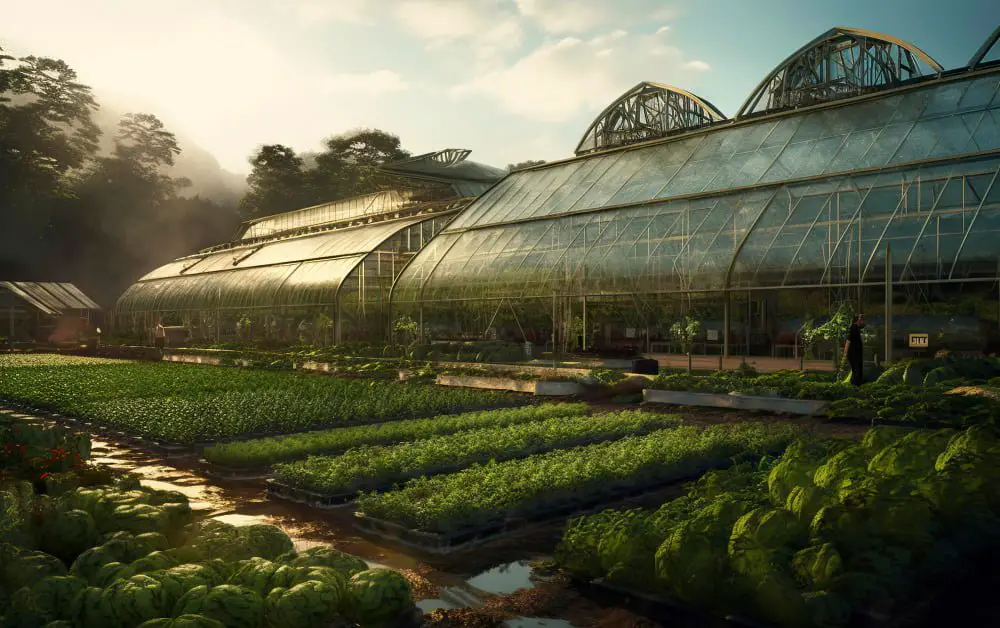
High peak industrial roof design is a popular choice for greenhouses due to its practicality and durability. Its steep slope allows for efficient water runoff, preventing pooling and potential structural damage.
This design also maximizes natural light penetration, benefiting plant growth. The high peak provides ample headroom, optimizing space utilization and facilitating easy movement within the greenhouse.
Additionally, the industrial materials used in this design, such as metal or plastic, offer excellent resistance against harsh weather conditions and reduce maintenance requirements.
Overall, the high peak industrial roof design is a reliable and efficient option for greenhouse owners seeking a robust roofing solution.
